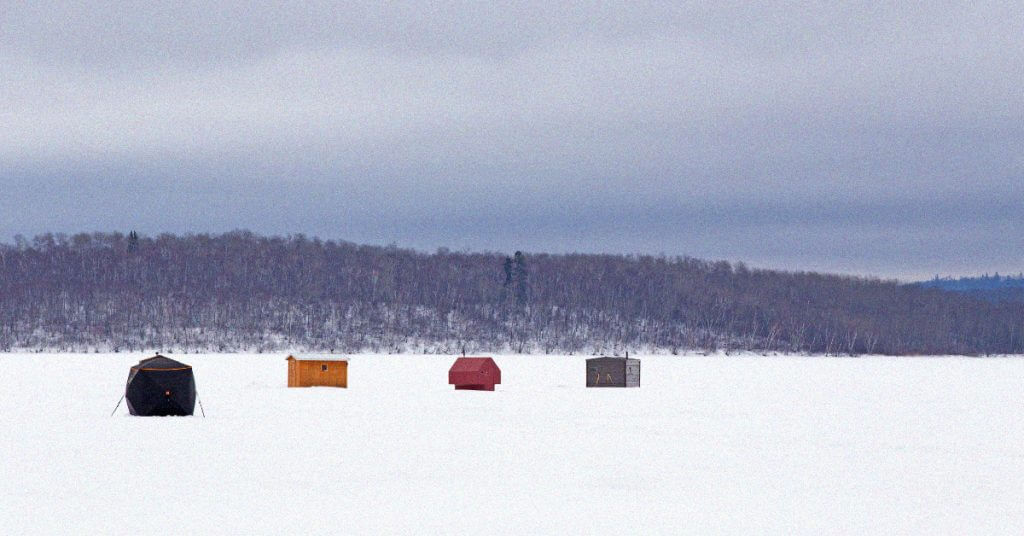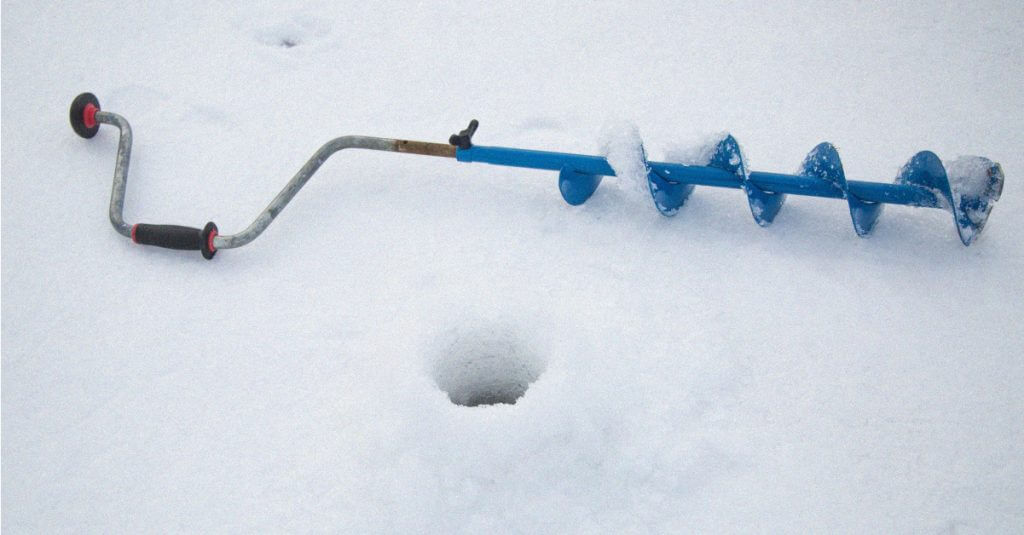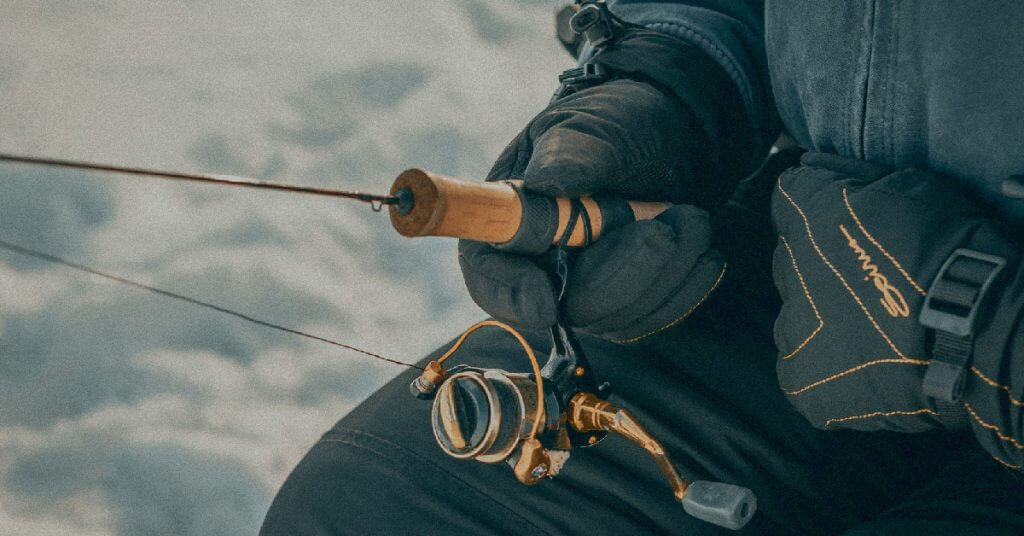Bluegill might be one of the first fish most anglers catch when they start out as kids. This fish is always hungry, isn’t too hard to pull in, and lives pretty much anywhere in the United States.
For most fishermen, bluegills are associated with spring, summer, and fall fishing, but if you are into ice fishing for panfish, bluegills are a “go-to” fish that rarely disappoint.
The following is all you need to know about ice fish for bluegill.
Where to Find Bluegill Ice Fishing?
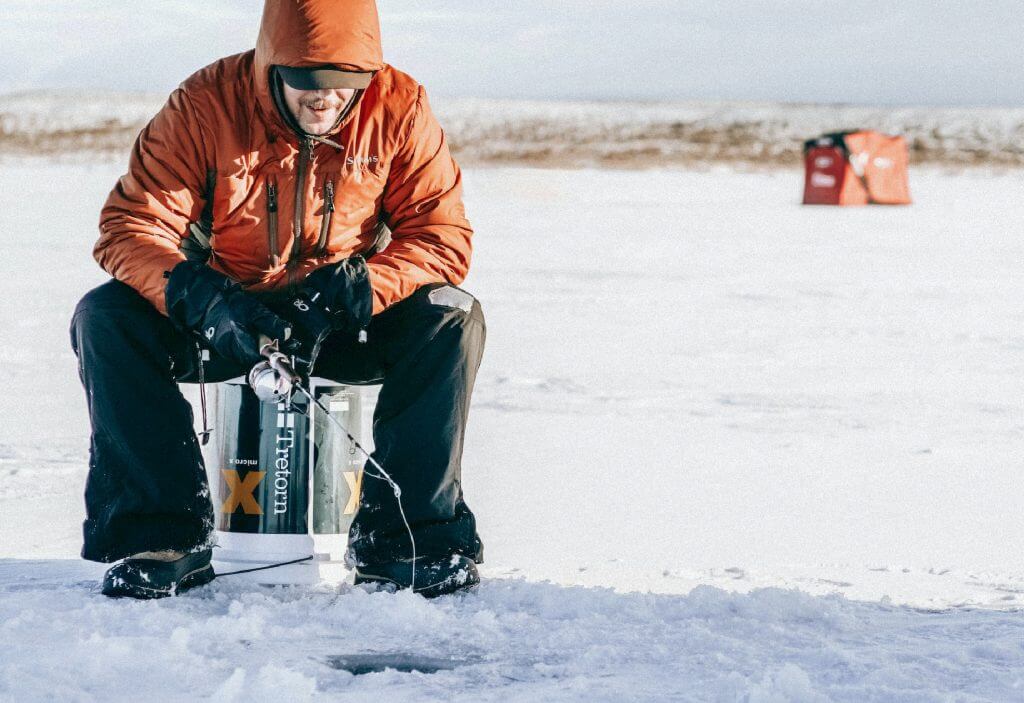
Non-ice fishing anglers may not know this, but bluegills are possibly the most prolific fish across the ice belt. The ice belt is generally considered the upper Midwest through the Northeastern states.
States included are all the New England States, New Jersey, Pennsylvania, Maryland and Delaware, northern Virginia and West Virginia, Ohio, Illinois, Indiana, Michigan, Wisconsin, Minnesota, North Dakota, South Dakota, Iowa, and Missouri.
Ice fishing means that pretty much any body of water with fish will have at least a small bluegill population.
In most bodies of water, because they are remarkably resilient and adaptable, as well as prolific breeders, there are likely many if there is one bluegill in a body of water.
Where To Look?
The winter is harder on every freshwater fish than any other time of year. If you want to know how to find panfish for ice fishing, the best way is to match the habitat with available food and access to warmer, shallower water.
From first ice to when the weather turns constantly cold, bluegills will forage for insects, larvae, and minnows, which means they will generally be found in shallower bays, openings to inlets, and at the mouth of small streams and rivers during early ice, where winter sun will heat the water.
As oxygen levels deplete and vegetation dies, bluegill will migrate to deeper water (usually about 15 to 35 feet of water.)
From mid-winter to early spring, during late ice, angling for bluegills will revert and resemble what it was like when they could be found along weed beds in shallower water.
There are three criteria for deciding where ice anglers should put ice fishing holes when targeting bluegills:
- Access to shallower, warmer water so bluegill can get to baitfish and insects
- Flatter, soft bottoms where larvae live until things warm up
- Any area that has vegetation remnants
What Depth Works Best?
Occasionally, you can find bluegill in deeper water. Still, if you are targeting bluegill for ice fishing, 35 to 40 feet is about the maximum depth you will find them with any regularity.
When fishing for bluegill in any depth, using an ice fishing fish finder can be invaluable.
Use the fish finder to locate a school or suspending fish. Then, use your ice fishing auger to drill several holes in the vicinity, as bluegills will move throughout the day, depending on available bait and water temperature.
Using a more robust ice fishing rod is advisable if you are fishing in deeper water.
How to Ice Fish for Bluegill

If you know how to ice fish for panfish, you know how to ice fish for bluegill. Whether you are targeting sunfish, bluegill, pumpkin seeds, or perch, the strategies and approaches are the same.
Generally, bluegill can be caught using three types of presentation: Jigging, lures, and live bait. Each can be effective, depending on what the fish are going after.
In some situations, jigging works best because the fish are going after movement. In other situations, lures provide a glint of metalwork because it reminds bluegills of baitfish. Bait works best if the fish are sluggish.
One thing to keep in mind is that bluegill in summer in warmer water is a different beast than bluegill in water (as are almost all freshwater fish.)
Bluegill will strike more readily than many fish in colder water, but their metabolism still has slowed dramatically.
Whereas in warm water, they might strike a larger bait, in colder water, the preferred size of bait is significantly smaller.
Jigging for Bluegill
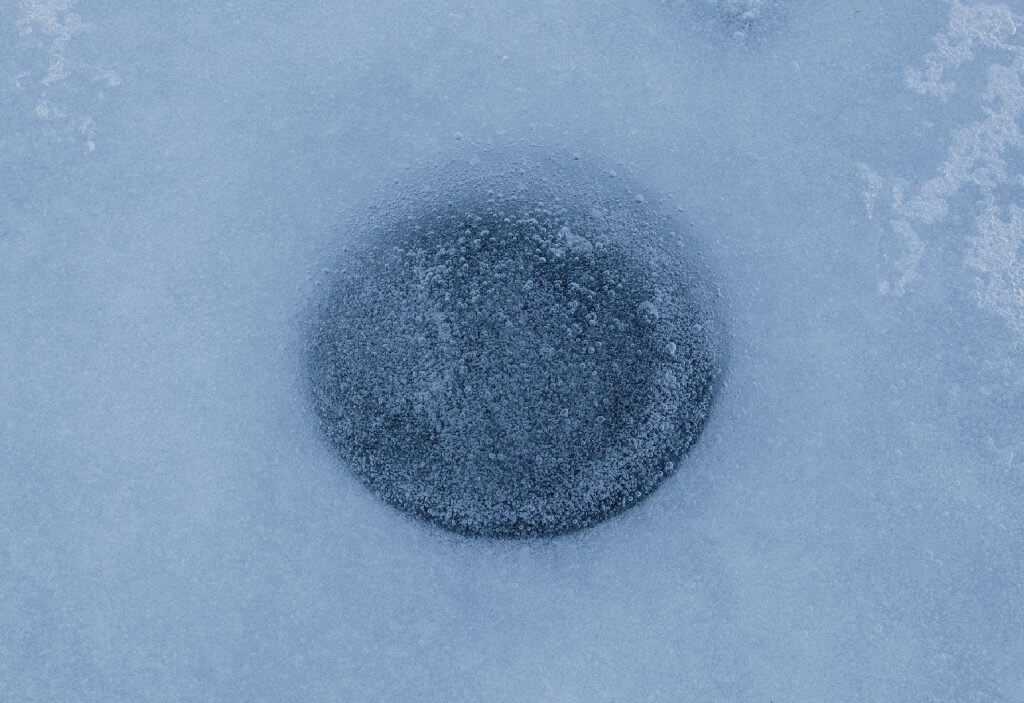
Jigging can be deadly when fishing for bluegill. If the bluegill are biting and the presentation is right, the fish almost cannot ignore a jig.
Jigs with feathers that resemble insects or soft baits that resemble minnows and small baitfish are almost irresistible.
The one factor in terms of jig selection is size. Bluegills typically will only go after micro jigs in an ice fishing environment.
Jig Sizes
The best sizes for micro jigging in water deeper than five or six feet are 1/64 to 1/12 ounces and 1/2 to an inch long. Bluegill will be hesitant to strike any much larger bait.
If fishing in deeper water, using a tungsten jig head is advisable because it is denser, and you can use a heavier jig but not sacrifice size.
Jig Color
Color can play an important role in jigging. Brighter yellows or oranges that resemble perch usually get a positive reaction.
For plastic baits, your color should be off-white, pearl, muted oranges, or a silver and blue or black striped mix.
Jig Techniques
In terms of technique, using an up-and-down pulse or “flutter” are effective. So is raising and lowering the jig through the water column slowly.
A finesse approach is to “twitch” the rod tip to subtly move the jig at a suspended level to present a suspending target for the fish.
These approaches will also work on crappie, walleye, bass, pickerel, and pike.
If the fish are sluggish, “deadsticking” the bait can also be effective.
Deadsticking involves holding the bait at a suspended height and only moving it by twitching it occasionally. The mistake many anglers make is to move the bait too often.
It is not uncommon for deadsticking to only work when the bait is motionless for a minute or more.
Sometimes, a bait must remain motionless for several moments.
Best Lures for Bluegill Ice Fishing

When using lures for bluegills, the goal is to resemble either a dying bait fish or a suspending bait.
Spoons and modified spoons work the best either by using the twitching technique or raising them up and down the water column.
Deadsticking can also work in certain situations but should not be relied upon.
If you use soft plastic, grubs work well, as do small minnow presentations. Micro worms like plastic waxworms work in shallow water, but their effectiveness is limited.
One tip for plastics is to take a larger fluke plastic bait and cut off the fork tail about an inch down the spine. Hook that to a lure or jig.
Setting Tip-Ups for Bluegill Ice Fishing
Using tip-ups when ice fishing for bluegill can be very effective. Set them up the way you would a dead stick rig or with live bait, and let the bait soak for several hours.
The trick to using tip-ups is to get quality tip-ups that are reliable in every type of weather. You do not want to constantly fight your tip up because snow or ice jams it.
Frequently Asked Questions
The following are a few questions that will help you formulate your ice fishing strategy for bluegill, as well as a few fishing tips you can use year-long.
What is the best depth to ice fish bluegill?
The best depth to fish for bluegill in hard water depends on the activity of the fish.
That can range from the fish looking for food in shallower, warmer water along a weed edge early in the season to hanging out up to about 40 feet when oxygen levels drop.
What is a bluegill’s average size?
Bluegills can range from a couple of inches to as large as 6 or 7 inches from the lip to the tail end.
The average-sized fish most often caught ice fishing will range from 4 to six inches, but big bluegills will occasionally exceed 8 inches.
Are bluegills good to eat?
Bluegills that are large enough to render meat are some of the tastiest fish you can consume.
Soak bluegill meat in milk overnight to remove the fish taste and dissolve smaller bones, and you are in for a dinner you will not soon forget.
What bait do bluegill prefer?
That depends on the environment you find them.
Earlier in winter, when shallow water still warms up and has at least nominal oxygen levels, anything that resembles a minnow or dying bait fish can prompt a strike.
In deeper water, jigs, spoons, and bait, live or otherwise, later in the season can work.
The key to finding the right bait is to try your array of baits across different fishing environments and depths until you find one that prompts a strike.
Final Thoughts
If you are ice fishing, there are plenty of “sexier” fish you can target, but few are as dependable as the bluegill.
Even when other fish are extremely sluggish or disinterested in bait or lure presentations, bluegill can usually be enticed to strike.
The key to ice fishing for bluegill is locating them and then matching your presentation to how the bluegills behave.



